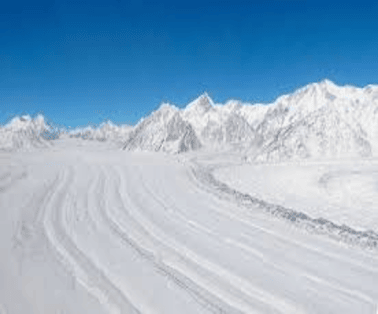In the 75th year of Independence, India’s new Parliament building was recently inaugurated by the PM of India.
Key Points On New Parliament Building
- The construction of the original parliament building was completed in 1927.
- The almost-a-century-old structure was increasingly being found to be inadequate to service the government’s present-day requirements.
- Keeping this in mind, both the Lok Sabha and the Rajya Sabha passed resolutions to construct a new parliament building.
- After due process, the foundation stone of the new parliament building was laid on December 10, 2020 by PM Modi.
- The designing of the new parliament building was done by Ahmedabad-based HCP Design and Management Pvt Limited. Tata Projects won the contract to build the new Parliament building, a part of the Centre’s Central Vista redevelopment plans.
Features Of new Parliament building
- The structure of the new parliament building is built over an area of 64,500 square metres.
- The new Parliament building is a triangular structure. It houses the Lok Sabha, the Rajya Sabha, the Central Lounge and offices of constitutional authorities.
- The new parliament building will house a larger Lok Sabha hall with a capacity of up to 888 seats, and a larger Rajya Sabha hall with a capacity of upto 384 seats. The Lok Sabha may accommodate up to 1,272 seats for joint sessions of Parliament.
- The Lok Sabha hall is based on the peacock theme, India’s national bird.
- The Rajya Sabha is based on the lotus theme, India’s national flower.
- The new building will have six Committee rooms. The present structure has three such rooms. There will be 92 rooms for the use of the Council of Ministers.
- In the new parliament building, two members will be able to sit side by side on each bench in the Lok Sabha and the Rajya Sabha Chambers
- Each seat will be equipped with digital systems and touch screens.
- A central courtyard will make for an open meeting space for Members of both houses. The facility is designed to meet high-level of security standards.
- The new parliament building will have a Constitution Hall for the purpose of showcasing India’s democratic heritage.
- A “Platinum-rated Green Building”, the new Sansad Bhavan will embody India’s commitment towards environmental sustainability
- The new parliament building will be an embodiment of Indian heritage, reflecting the “vibrance and diversity of modern India, incorporating our cultural and regional arts and crafts”.
- The new Parliament building will be divyang friendly, and people with disabilities will be able to move around freely, says the website
Old Parliament Building
- The old building will continue to be used.
- The basic architectural strategy is to make the two buildings complement each other.
- As per the govt’s stated plan, full care will be taken to retain the old building’s historical heritage.
- All the statues situated in the Parliament Complex will also be restored.
Issues With The Old Parliament Building
- The present building was never designed to accommodate a bicameral legislature for a full-fledged democracy.
- The seating arrangements are cramped and cumbersome, with no desks beyond the second row.
- The addition of services like water supply and sewer lines, airconditioning, firefighting equipment, CCTV cameras, etc., have led to seepage of water
- Communications infrastructure and technology is antiquated in the existing Parliament
- The current Parliament building was built when Delhi was in Seismic Zone-II; currently it is in Seismic Zone-IV
- Inadequate workspace for employees
Central Vista Redevelopment Project

Other Important Buildings
Binnenhof, The Hague
Netherlands’ Binnenhof. was built in the 13th century to serve as a residence of the counts of Holland, the most eye-catching part of it is the Ridderzaal (Knights’ Hall). Binnenhof became the seat and symbol of the Dutch Republic in around 1585,
National Parliament House, Dhaka
Designed by the famous architect Louis Kahn, Bangladesh’s National Parliament House is one of the largest legislative complexes in the world. Its commission was given in 1962 and it took two decades to finish its construction
The Capitol, Washington DC
Completed in 1800, the Capitol is widely recognised as a symbol of American democracy, where the Congress meets.
The Great Hall of the People, Beijing
The decision to construct the Great Hall of the People was taken in August 1958, when the Communist Party ordered to build 10 ‘Great Buildings’ to mark the 10th anniversary of the People’s Republic of China.
The Palace of Parliament, Bucharest
Constructed between 1984 and 1997, the Palace of Parliament in Romania is one of the world’s biggest and heaviest buildings — it’s 276 ft tall and 4.10 million tonnes in weight.
The Reichstag, Berlin
Inaugurated in 1894, the Reichstag was the headquarter of the Weimar Republic (1919-33) before it sustained severe damages in 1933 shortly after Adolf Hitler was sworn in as Chancellor of Germany. It was also damaged in 1945, during World War II, when Russia attacked Berlin
To Download Monthly Current Affairs PDF Click here
Get Inspiration from CLAT 2025 Topper
Click here to get a free demo
Everything About CLAT 2025



